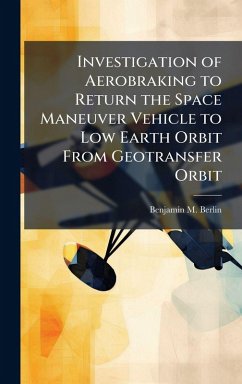
Critical Technologies for Building the Space Elevator
Versandkostenfrei!
Versandfertig in über 4 Wochen
25,99 €
inkl. MwSt.
Weitere Ausgaben:

PAYBACK Punkte
13 °P sammeln!
Into Space Using a Thread and a Laser - Blue DartWhat did the world think when Sputnik was launched? The United States clearly thought it needed to take up the challenge. Twelve years later, when Neil Armstrong set foot on the moon the world was breathless. That sort of imagination and hard work combined to make the United States' space program the premier exploration effort of the 20th century. The next great impossible task is to make space access affordable. Building a space elevator will generate the largest improvement in cost and capacity of any new space access technology. Space explora...
Into Space Using a Thread and a Laser - Blue DartWhat did the world think when Sputnik was launched? The United States clearly thought it needed to take up the challenge. Twelve years later, when Neil Armstrong set foot on the moon the world was breathless. That sort of imagination and hard work combined to make the United States' space program the premier exploration effort of the 20th century. The next great impossible task is to make space access affordable. Building a space elevator will generate the largest improvement in cost and capacity of any new space access technology. Space exploration is now a second rate topic. The media is more interested in stories about Britney Spears' latest folly or in reporting how many casualties occurred in Iraq or Afghanistan today. What will it take to reignite the public thirst for space exploration that everyone felt in 1969? Unfortunately the reasons for scaling back space exploration are too easy. It's too expensive. It doesn't offer enough benefits. It's a waste of time. Most reasons have their roots in the difficulty of getting to space in the first place. To cap it off, rockets are horribly inefficient in terms of fuel and weight. About 95% of what is on the launch pad is spent accelerating the remaining 5% into orbit. Subtract the structure of the rocket, and you can put a payload of 1-2% of launch weight into orbit. All that fuel costs a lot of money and rocket reusability has never been cheap or easy. A much more efficient concept is to have a tether stretching from the Earth out into space that electric vehicles climb and descend. This work has been selected by scholars as being culturally important, and is part of the knowledge base of civilization as we know it. This work was reproduced from the original artifact, and remains as true to the original work as possible. Therefore, you will see the original copyright references, library stamps (as most of these works have been housed in our most important libraries around the world), and other notations in the work. This work is in the public domain in the United States of America, and possibly other nations. Within the United States, you may freely copy and distribute this work, as no entity (individual or corporate) has a copyright on the body of the work. As a reproduction of a historical artifact, this work may contain missing or blurred pages, poor pictures, errant marks, etc. Scholars believe, and we concur, that this work is important enough to be preserved, reproduced, and made generally available to the public. We appreciate your support of the preservation process, and thank you for being an important part of keeping this knowledge alive and relevant.












